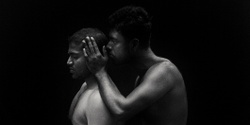Panel Discussion: How Do We Bear Witness?
Event description
As part of Hoda Afshar: A Curve is a Broken Line, join us for a discussion on the politics of image-making. Hoda Afshar is an Iranian documentary photographer based in Naarm/Melbourne. Her work not only draws our attention to critical contemporary social issues, but it forces us to question how we bear witness to them through photo-media, documentary and the structures of journalism.
Hear from renowned artist Hoda Afshar, Dr Samid Suliman (Senior Lecturer, School of Humanities, Languages and Social Sciences, Griffith University), Miriam Deprez (photographer, journalist, and researcher) as they discuss the importance of challenging bias, embracing collaboration, and the subject's agency in their representation.
This is a free event. All attendees must register and show tickets to UQ Art Museum Staff upon entry.
Please inform us of any accessibility requirements through the registration page. Please note that a two week lead time is required to secure Auslan interpretation for this event. Visit our website for our accessibility information.
Hoda Afshar: A Curve is a Broken Line is an Art Gallery of New South Wales touring exhibition.

Image: Hoda Afshar Shamindan and Ramsiyar – Manus Island, from the series Remain 2018 © Hoda Afshar, image courtesy the artist.
____________________________________________________________________________________
Hoda Afshar was born in Tehran, Iran (1983), and is now based in Melbourne, Australia. She completed a Bachelor degree in Fine Art– Photography in Tehran, and her PhD thesis in Creative Arts at Curtin University.
At the intersection of conceptual, staged and documentary image-making, Hoda Afshar’s artistic practice explores the representation of gender, marginality and displacement. Initially drawn to the potential of the documentary image to unearth hidden realities, she is equally committed to critiquing the collusion between the photographic medium and hierarchies of power. Informed by her own experience with migration and cultural displacement, Afshar’s work takes the intrusiveness of the camera as a point of departure to unpack the relationship among truth, power and the image while disrupting traditional image-making conventions.
Afshar’s works are held in major collections including the Victoria & Albert Museum in London, Kadist Collection in Paris, National Gallery of Victoria, the Art Gallery of South Australia, the Auckland University Art Collection, the University of Queensland Art Museum, the Monash University of Modern Art Collection, the Art Gallery of New South Wales and the Art Gallery of South Australia.
Her works have been exhibited widely in Australia and abroad. In 2023, her first major survey exhibition opened at the Art Gallery of New South Wales in Sydney accompanied by a publication. It was in 2021, that her first monograph Speak the Wind was published by MACK in London. Other exhibitions include: Thinking Historically in the Present, Sharjah Biennial 15, Sharjah (2023), The National 4: Australian Art Now (2023), STILL ALIVE, Aichi Triennial, Nagoya (2022); Between the Sun and the Moon, Lahore Biennale, Lahore (2020), Speak the Wind, Monash Gallery of Art & PHOTO 2022 Festival of Photography, Melbourne (2022). Afshar was a recipient of The Sidney Myer Creative Fellowship in 2021. She was awarded the National Photographic Portrait Prize, National Portrait Gallery, Canberra in 2015, and the Bowness Photography Prize, Monash Gallery of Art, Melbourne in 2018. Afshar holds a PhD in Creative Arts from the Curtin University of Technology, Western Australia.
Miriam Deprez is a Meanjin/Brisbane-based photographer, journalist, and academic. She is currently undertaking her PhD at Griffith University, looking at the visual politics of occupation and resistance in Palestine and Kashmir, through the lens of critical approaches to photojournalism. Miriam has worked as a freelance journalist and photographer for the past decade throughout Europe, Russia, Cambodia, the Pacific Islands, rural Australia, and the Middle East, with a particular concentration on Palestine, where she was the editor for The Palestine Monitor. Miriam is also the current secretary of SafeGround, an Australian NGO that documents and advocates for the global elimination of legacy and emerging weapons. She also teaches analogue photography and human rights journalism at Griffith.
Dr Samid Suliman is Senior Lecturer, Migration and Security, in the School of Humanities, Languages, and Social Science at Griffith University. He is a member of the Griffith Centre for Social and Cultural Research, and a lead researcher with the Griffith University Climate Action Beacon and the Disrupting Violence Beacon. His expertise is in migration and mobility, globalisation and culture, political science and political theory, climate change and postcolonial studies. Among his recent publications is Performance, Resistance, and Refugees (co-edited with Suzanne Little and Caroline Wake, Routledge, 2023).
Tickets for good, not greed Humanitix dedicates 100% of profits from booking fees to charity

